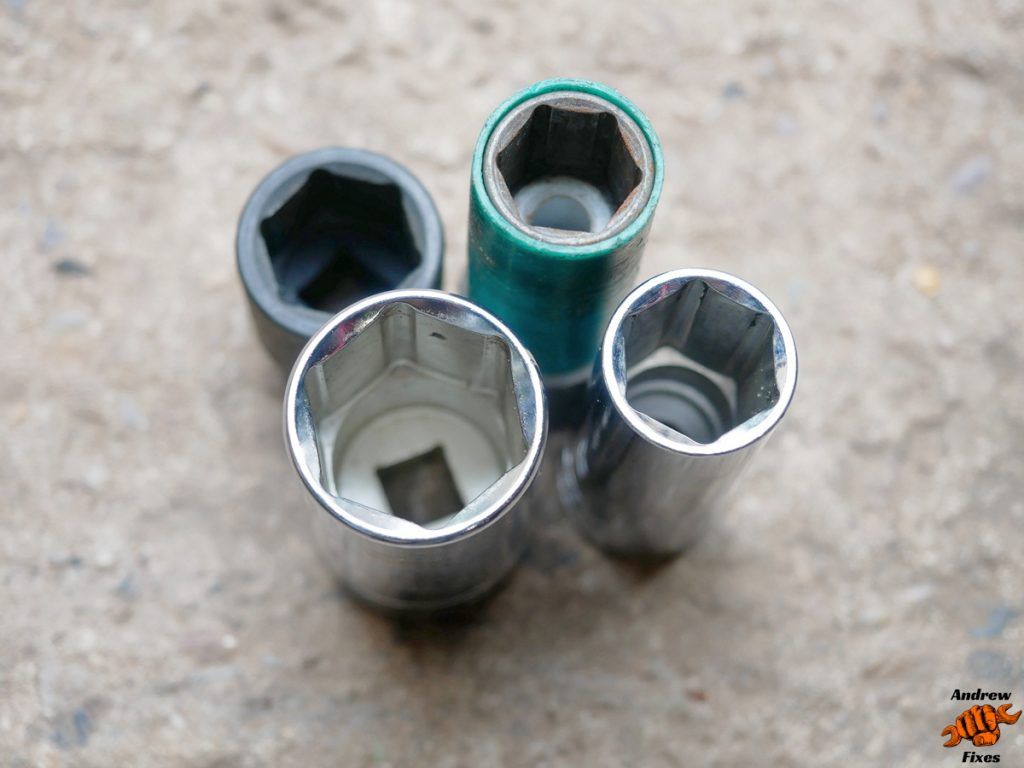A 12 point socket is a type of socket wrench designed to grip nuts and bolts more securely than a 6 point socket. 12 point sockets have 12 flat sides inside that allow for better contact with the fastener. This prevents rounding off the corners and provides more torque for loosening or tightening stubborn bolts.
Page Contents
Better Grip
The key advantage of a 12 point socket is the increased grip and contact with the bolt head. A 6 point socket has 6 flat sides so it only contacts the bolt at 6 points. This can allow the corners of the bolt to round off if a large amount of torque is applied.
A 12 point socket has 12 flat sides so it contacts the bolt at 12 different points. This distributes the force more evenly and reduces the chance of slipping or rounding off the bolt. The increased contact area also allows a 12 point socket to handle more torque before losing grip.
Reduced Fastener Damage
Using a 12 point socket also helps reduce the chance of damaging or rounding off the corners of the nut or bolt. As mentioned above, a 6 point socket applies force primarily at the corners which can cause them to round off over time with repeated use.
A 12 point socket contacts the sides, greatly reducing stress on the corners. This helps maintain the shape of the nut or bolt so it stays intact. Less rounding and damage makes it easier to remove the fastener in the future.
Works on Rounded Surfaces
One scenario where a 12 point socket really shines is when working on an already rounded fastener. If a nut or bolt already has rounded corners, a 6 point socket will likely keep slipping and rounding it off further.
But a 12 point socket can still grip well due to the increased number of contact points. The flat sides will be able to find purchase even on an already rounded surface. This allows removal of stuck fasteners where a 6 point socket would continue to slip and make things worse.
Perfect for High Torque Applications
Any application where high amounts of torque need to be applied is a perfect match for a 12 point socket. The increased grip and reduced corner rounding make them ideal for use with impact wrenches or where a lot of tightening or breakaway force is required.
For example, mechanics often use 12 point sockets when working on wheels, drivetrain components, or suspension parts. The spec calls for high torque settings so a 12 point socket is less likely to damage or round the bolt.
Works at Various Angles
A 12 point socket can also grip well when applied at an angle or corner. The additional flat sides allow it to contact the fastener even if it is not inserted straight on. This allows access even in cramped areas where the wrench may only fit at an angle.
A 6 point socket needs to be straight on to fully grip. But a 12 point socket can get sufficient purchase to loosen or tighten a bolt even at an offset angle. This versatility makes it easier to use in confined spaces.
Disadvantages and Limitations
While 12 point sockets have some clear benefits, they also come with a few limitations to consider:
- More expensive – Due to the increased manufacturing complexity, 12 point sockets are generally more expensive than 6 point sockets.
- Thicker walls – To maintain strength with the extra flats, 12 point sockets typically have thicker walls which reduces the inner diameter and limits nut/bolt sizes.
- Less common sizes – Not as many sizes available compared to the range of 6 point sockets.
- Round fasteners only – Only works on bolts/nuts with a hex shape. Does not fit square or other shaped fasteners.
Comparison of 6 Point vs 12 Point Sockets
| 6 Point Socket | 12 Point Socket | |
|---|---|---|
| Points of contact | 6 | 12 |
| Gripping power | Good | Excellent |
| Corner rounding | Moderate | Minimal |
| Ideal torque | Low-Moderate | Moderate-High |
| Versatility | Highly versatile | Mainly high torque applications |
| Cost | Low | Moderate-High |
When to Use Each Type
Based on the comparison, here are some guidelines on when to use each socket type:
- 6 point socket – Everyday applications with low to moderate torque. Provides good versatility at a low cost.
- 12 point socket – High torque applications, rounded/damaged fasteners, or limited access. Provides extra grip but costs more.
For most mechanics or DIYers, having both 6 point and 12 point sockets in your toolbox gives you the right tool for any job. Use 6 point for routine tasks, and switch to 12 point for frozen or high torque bolts where extra grip is needed.
Conclusion
A 12 point socket provides substantially more grip and contact on the bolt which greatly reduces rounding, slipping, and other fastener damage. The increased torque capacity and ability to work on rounded surfaces make a 12 point socket ideal for stubborn, stuck, or high torque applications.
However, the higher cost and lack of versatility mean a 12 point socket may not be suited for everyday low torque tasks. Having both 6 point and 12 point sockets available provides the benefits of each. But for critical high torque or rounded fastener applications, a 12 point socket is the clear winner.
